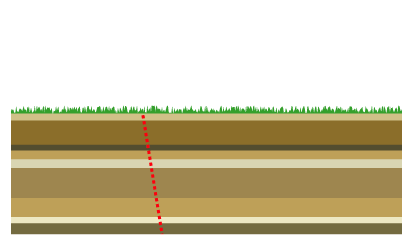Speciation
Speciation: Allopatric, Peripatric, Parapatric, and Sympatric |
Also
see: | |||||||||||||
|
Allopatric Speciation Peripatric Speciation Parapatric Speciation Sympatric Speciation Speciation Introduction Peripatric SpeciationSpeciation is the evolutionary process by which new biological species arise. Four speciation processes are recognized that are differentiated by the extent to which a population from within a population becomes geographically isolated from the parent population. Allopatric Speciation
Peripatric SpeciationPeripatric speciation closely resembles allopatric speciation. New species arise in isolated, smaller peripheral populations that are prevented from exchanging genes with the main population. It is related to the concept of a founder effect, since small populations often undergo bottlenecks. The essential mechanism of paripatric speciation is genetic drift. In peripatric speciation, small population size would makespeciation a more likely consequence of geographic isolation since genetic drift acts more quickly in small populations. Genetic drift, and perhaps strong selective pressures, would cause rapid genetic change in a small population. This genetic change could be sufficiently substantial to result in a new species. Because the extent of genetic drift can’t be measures after the fact, testing the hypothesis of this mode of speciation is very difficult. Parapatric SpeciationParapatric speciation occurs during incomplete, only partial separation of the geographical environments of two diverging populations. Individuals within each species may come in contact or cross habitats at times, but reduced fitness of the heterozygote leads to selection for behaviors or mechanisms that prevent their inter-breeding. Thus, in parapatric speciation, selection acts on existing variation within a single environment, as opposed to selection proceeded differently in separated environmental niches, as in the case of peripatric and allopatric speciation. Ecologists refer to parapatric and peripatric speciation in terms of ecological niches. In parapatric speciation there is no physical barrier to gene flow. The population members are share the same environment, but fail to mate randomly. Instead, individuals are more likely to mate with their geographic neighbors than with individuals in a more distant part of the environment. In this mode, divergence may happen because of reduced gene flow within the population and varying selection pressures across the population’s physical range. Sympatric SpeciationIn sympatric speciation, two or more progeny species arise from a single parent species all within the same geographic environment, that is, species diverge while inhabiting the same place. The existence of the sympatric speciation mechanism remains a scientific debate since gene flow due to interbreeding would be expected to overwhelm any emerging genetic differentiation within a combined population. | ||||||||||||||
|
Fossil
Museum Navigation:
Home Geological Time Paleobiology Geological History Tree of Life Fossil Sites Fossils Evolution Fossil Record Museum Fossils | ||||||

 In
allopatric speciation, a population splits into two geographically
isolated populations due to formation of a barrier between
portions of a population, for example, because of mountain
building as depicted in the animal to the left. The isolated
populations then experience differentiating genotypic and phenotypic
divergence as a result of different selective pressures in
their differing environments. Additionally, genetic drift will
occur differently, eventually differentiating the population’s
genotypes and phenotypes. The separated populations will also
experience different mutations that may persist differently
in their respective environments. Should the populations be
eventually recombine in the same environment, they have each
evolved differently to an extent that they remain isolated
because changes are too great to enable genetic mixing through
sexual reproduction. Allopatric speciation is not necessarily
precluded if some individuals from one group cross the barrier
and mate with members of the other group. In other words, allopatric
speciation can occur if gene flow between groups is greatly
reduced, but not entirely eliminated.
In
allopatric speciation, a population splits into two geographically
isolated populations due to formation of a barrier between
portions of a population, for example, because of mountain
building as depicted in the animal to the left. The isolated
populations then experience differentiating genotypic and phenotypic
divergence as a result of different selective pressures in
their differing environments. Additionally, genetic drift will
occur differently, eventually differentiating the population’s
genotypes and phenotypes. The separated populations will also
experience different mutations that may persist differently
in their respective environments. Should the populations be
eventually recombine in the same environment, they have each
evolved differently to an extent that they remain isolated
because changes are too great to enable genetic mixing through
sexual reproduction. Allopatric speciation is not necessarily
precluded if some individuals from one group cross the barrier
and mate with members of the other group. In other words, allopatric
speciation can occur if gene flow between groups is greatly
reduced, but not entirely eliminated.


